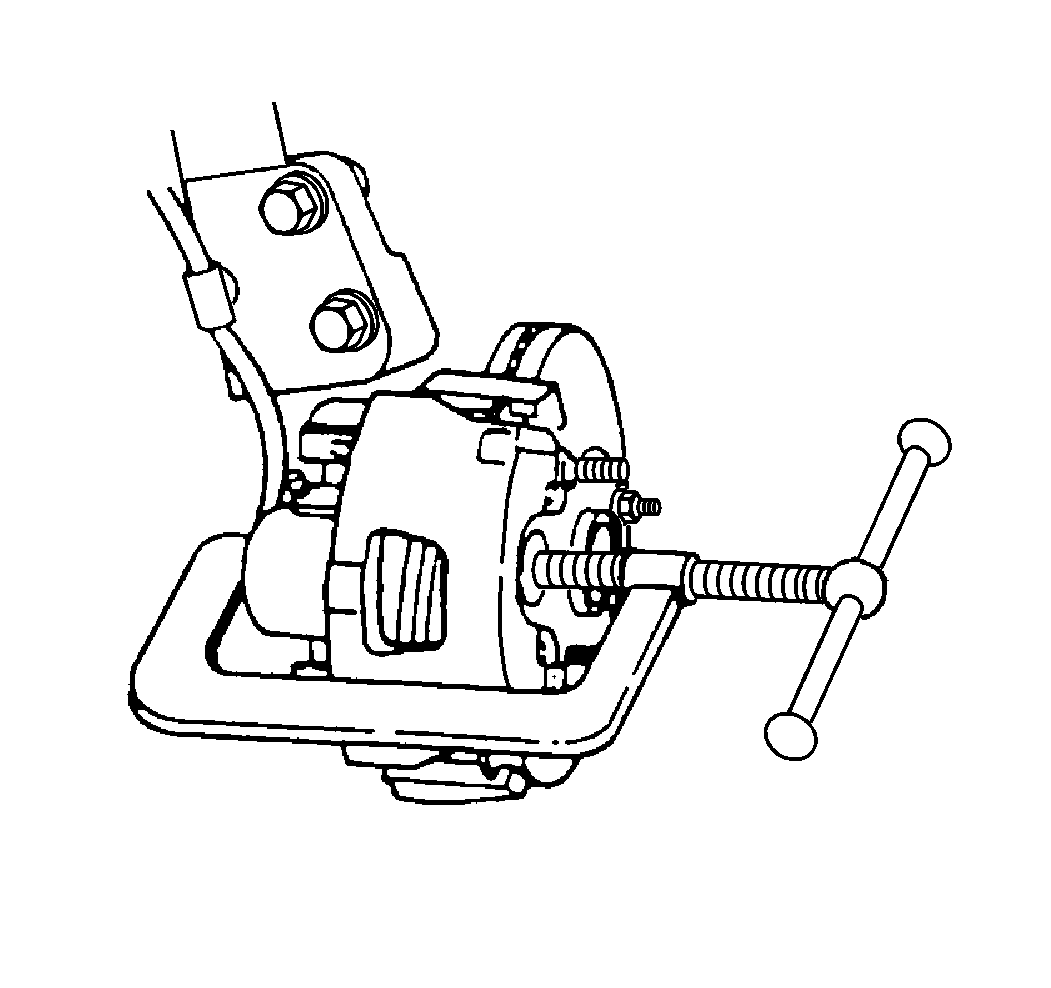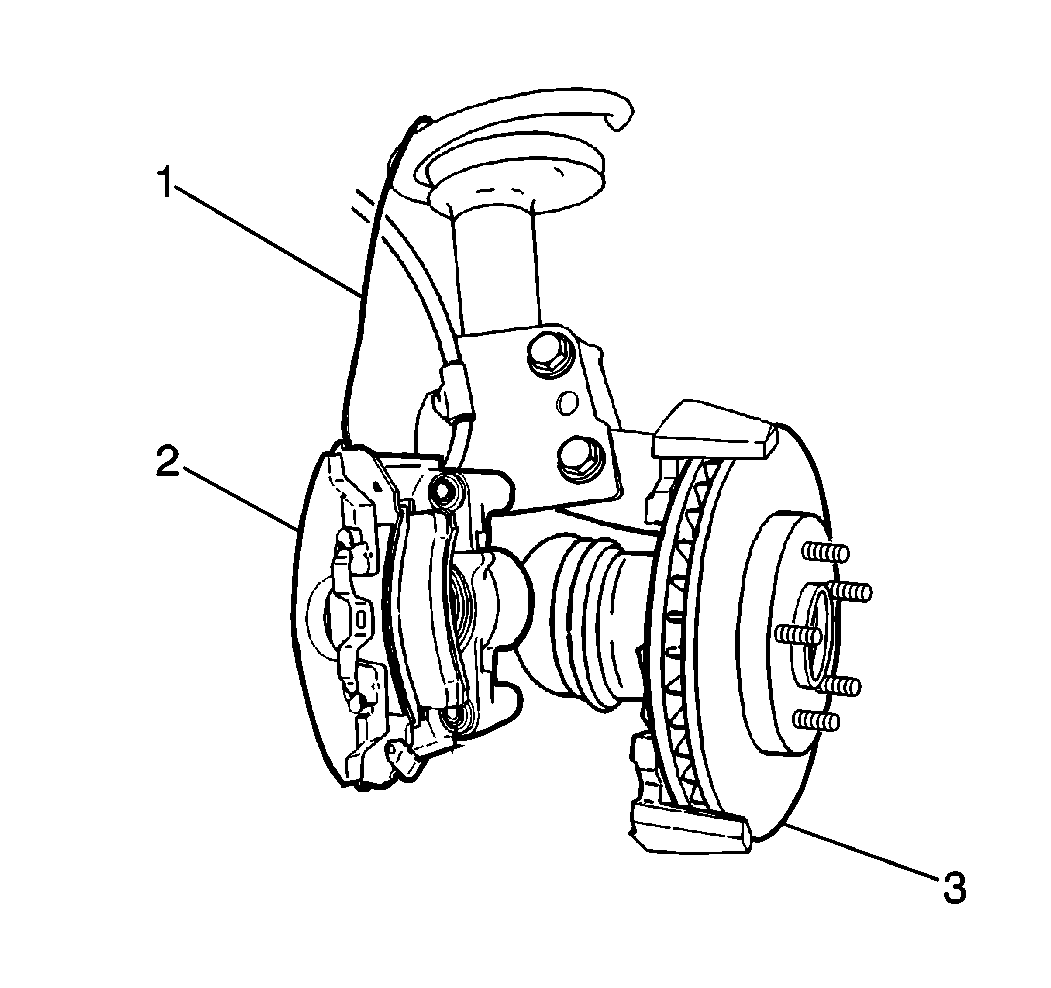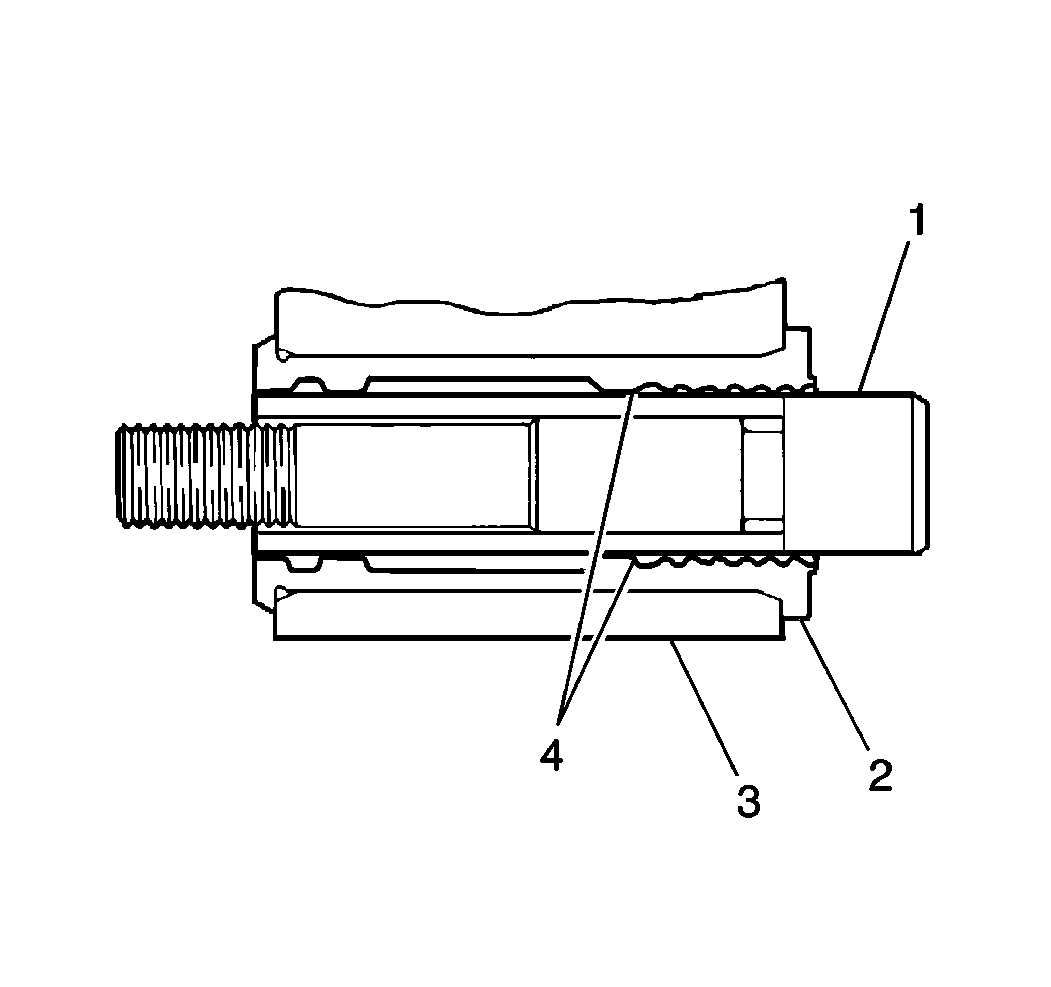Removal Procedure
- Remove two-thirds of the brake fluid from the master cylinder.
- Raise the vehicle and suitably support. Refer to Raising and Supporting
the Vehicle in General Information.
- Mark the relationship of the wheel to the axle flange.
- Remove the wheel and the tire.
- Re-install two wheel nuts to retain the rotor.

- If the caliper is to be
removed for unit repair, remove the bolt attaching inlet fitting (1), and
plug the opening in the caliper and/or pipe to prevent fluid loss and contamination.
If only shoes and linings are being replaced, do not disconnect inlet fitting.

- Push the piston into the
caliper bore to provide clearance between linings and rotor.
| • | Install a large C-clamp over the top of the caliper housing and
against the back of the outboard shoe. |
| • | Slowly tighten the C-clamp until the piston is pushed into the
caliper bore far enough to slide the caliper off the rotor. |

- Remove the caliper mounting
bolts and sleeves.

- Remove the caliper. If
only the shoes and linings are being replaced, suspend the caliper (2) with
a wire hook (1) from the strut.
- Inspect the mounting bolts and sleeves for corrosion.
- Inspect the bushings for cuts and nicks.
- If damage is found use new parts when installing the caliper.
- Do not attempt to polish away corrosion.
Installation Procedure
Important: Mounting bolts and sleeves should slide through bushings with only hand
pressure applied. If greater force is required, or mechanical assistance is
needed, complete the following steps:
- Remove the bolts and sleeves along the bushings.
- Inspect the mounting bores for corrosion. If the bore shows signs
of corrosion, remove the corrosion by using a 1-inch wheel cylinder honing
brush.
- Clean the bores with clean, denatured alcohol.
- Install bushings and lubricate. Refer to
Brake Caliper Overhaul
.

- Liberally coat ID of bushings
with silicone grease.
- Install the caliper.
Notice: Use the correct fastener in the correct location. Replacement fasteners
must be the correct part number for that application. Fasteners requiring
replacement or fasteners requiring the use of thread locking compound or sealant
are identified in the service procedure. Do not use paints, lubricants, or
corrosion inhibitors on fasteners or fastener joint surfaces unless specified.
These coatings affect fastener torque and joint clamping force and may damage
the fastener. Use the correct tightening sequence and specifications when
installing fasteners in order to avoid damage to parts and systems.
- Install the mounting bolts and sleeves.
- Install the inlet fitting, if removed.
Tighten
| • | Tighten the mounting bolts to 51 N·m (38 lb ft). |
| • | Tighten the Inlet fitting to 45 N·m (33 lb ft). |
- Install the wheel and the tire, aligning the previous mark.
| • | Remove the wheel nuts securing the rotor to the hub. |
| • | Torque the wheel nuts per specification in Tires and Wheels. |
- Fill the master cylinder to the proper level with clean brake
fluid.
| • | Bleed the caliper if the inlet fitting was removed. |
| • | Recheck the fluid level. |





